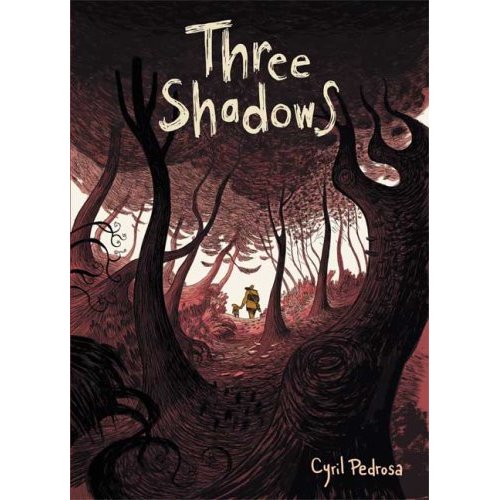Sometimes there’s a review that’s all the more in-depth for coming from outside the traditional media outlets. The educational outreach site Reading With Pictures was
founded in 2009 by award-winning graphic novelist and nationally syndicated cartoonist Josh Elder in order to revolutionize the role of comics in education…
At Reading With Pictures, we believe that comics have the potential to be more engaging, more efficient and more effective educational tools than traditional classroom materials.
A different, and in this case, lovingly detailed look at a book you’ve worked on is wonderful. Adrian Neibauer analyzes Cyril Pedrosa’s award-winning 2008 graphic novel Three Shadows, from FirstSecond:
I would highly recommend this book for any high-school literature classroom. Certain sections can also be used in the middle grades (6-8) for discussing the graphic novel’s major theme of fate. However, due to some mild language and non-sexualized nudity, THREE SHADOWS is best kept in high-school literature courses.
Neibauer divides his review into discussions of “Story” and “Art,” but does not neglect to mention in his first line that the comic is translated. Now how can we get translation as an aspect of comics into schools?
Here are some highlights:
STORY REVIEW
THREE SHADOWS by Cyril Pedrosa and translated from French by Edward Gauvin is the saddest and most moving graphic novels I have ever read. Louis and Lise are a husband and wife who are raising their young son, Joachim, in an unnamed rural, European landscape. Their small family is filled with simple pleasures and lots of love as they work together on their farm. However, everything changes when three mysterious shadows appear on the horizon haunting the family. Never explicitly stated at first, we learn later that the shadows beckon for the young Joachim. Joachim’s father, Louis, flees with Joachim in a brave, yet foolish attempt to outrun his son’s fate: death.
Throughout the story, we learn just how far a parent would go to protect their child. Embedded within this story are deep and complex discussions about fate, life, and death; as well as plenty of opportunities for older readers to practice the skills of making inferences and predictions.
ART REVIEW
THREE SHADOWS is completely pencil-drawn. Pedrosa’s use of black and white charcoal prepares the reader for the dark tone of the story. Pedrosa is a former Disney artist/animator and this experience serves him well here. He writes little dialogue, yet conveys much action, movement, and emotion. he characters seem to animate themselves as you turn each page.
Pedrosa’s artwork forces the reader to stop and think. His attention to detail gives readers all the clues they need to make accurate predictions and to infer about the plot. Each page can be used as a talking point or a stand-alone example of the novel’s themes and symbols.

Leave a Reply